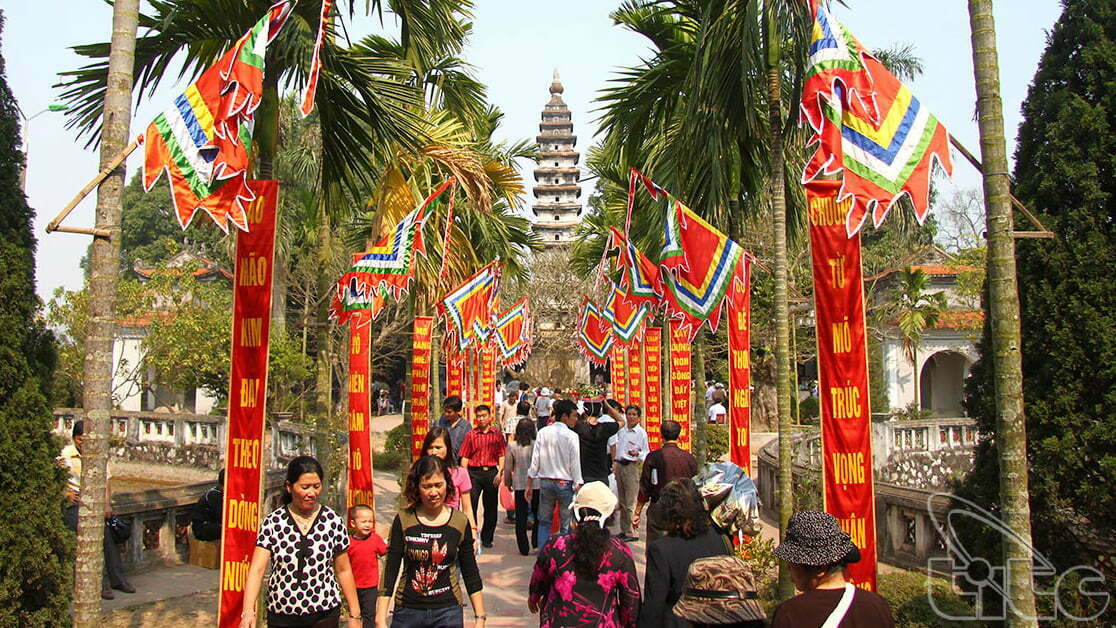Location: Tuc Mac Hamlet, Loc Vuong Ward, Nam Dinh City, Nam Dinh Province, far from Ha Noi about 90km and 3km north of Nam Dinh City’s centre.
Characteristics: The pagoda was originally built during the Ly Dynasty and later expanded in 1262 during the Tran Dynasty. It was a place for high-ranking mandarins and the aristocracy of the Tran Royal Court to worship and lead their religious life.
◊ Architecture
The pagoda built in the noi cong ngoai quoc style where the inner part was built in the form of the Han character 工 (Cong) and the outer, the Han character 国 (Quoc), had clear imprints of the cohabitation of Confucianism, Buddhism and Taoism.
A 7-tonne cauldron, since vanished, once guarded the front and could hold two men, was dubbed one of the four precious objects of An Nam, joining the Bao Thien Tower, the Quy Dien Bell and Quynh Lam Statue.
The statue of King Tran Nhan Tong lying on his left side shows him entering Nirvana; the statues of the three founders of the Truc Lam Buddhist Sect, Tran Nhan Tong, Phap Loa and Huyen Quang; and 60 red-lacquered and gold-trimmed Buddha and Saint Statues have been preserved in the pagoda.
◊ Pho Minh Tower
In particularly, a 13 story-tower named Pho Minh Tower in the shape of a lotus, 21 meters high, was built within the vicinity of the pagoda in 1305.
It is estimated that the 700-tonne tower relies on an area of only 30 square meters but up to now it has remained where for 700 years. The base and the tower’s first floor were constructed with flagstones and the upper floors were built with bricks.
On top of the tower, there is a gourd-shaped decoration which is kind of talisman to catch the elite energy from the universe. The tower is believed to connect the Earth and the Universe.




